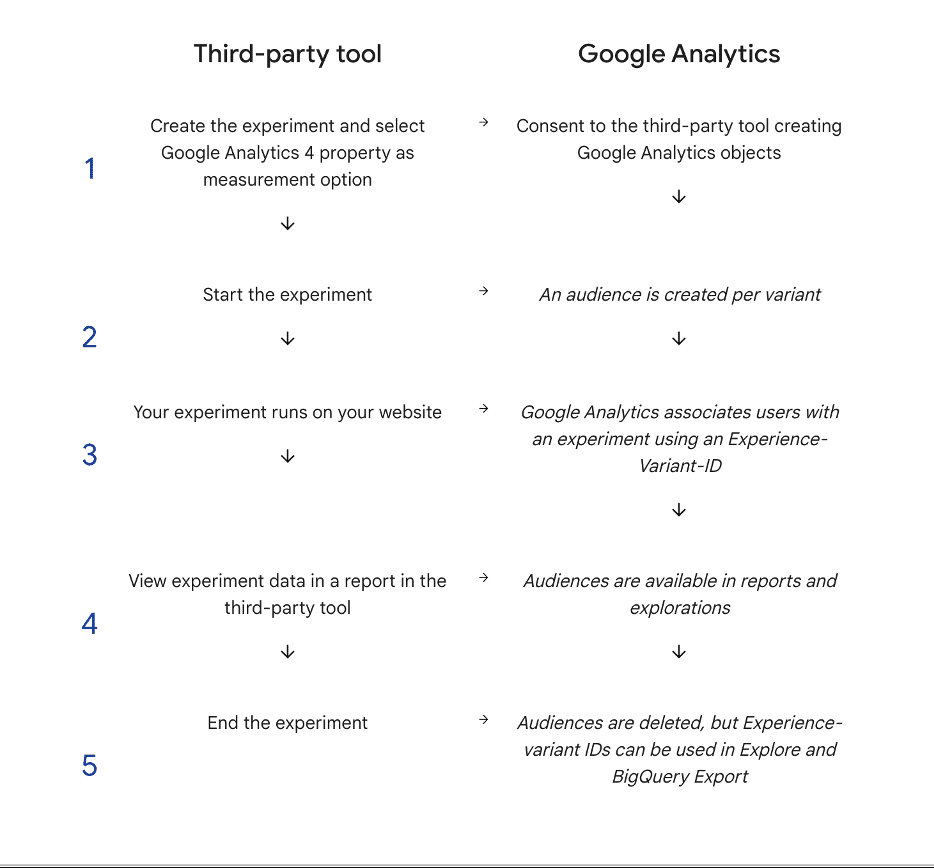
24. 5. 2023
Google Analytics 4: Integrating with a third-party experiment tool
As a digital analyst or a business owner, understanding your audience and their behavior is crucial for optimizing your website and maximizing your business’s success. Google Analytics 4 (GA4) is a powerful tool that provides valuable insights into user activity, and by integrating it with a third-party experiment tool, you can further enhance your understanding of your audience. In this article, we will explore the benefits of integrating GA4 with third-party experiment tools, along with an introduction to Google Optimize and the concept of third-party integration.
What is Google Optimize?
Google Optimize is a user-friendly testing and personalization tool offered by Google. It allows you to create and run experiments on your website, such as A/B testing, multivariates, and personalization campaigns, which make it easier to test different variations and measure their impact on user engagement.
The main selling point is a native integration with Google Analytics and its free version. The free version comes with its limitations:
up to 5 experiments at a time.
up to 10 personalizations at a time.
up to 16 combinations of multivariate testing (MVT).
up to 3 experiment objectives.
no audience targeting.
Experiment only for 35 days maximum.
Google also offers a paid version of Optimize 360, which offers higher limits, support, audience targeting, and more.
However, Google Optimize is scheduled to be sunsetted, which means it will no longer be available and actively developed or supported by Google after September 30, 2023. So, many companies must seek an alternative to keep their experiments running. This isn’t actually a bad thing.
As a result, integrating GA4 with other third-party experimentation tools becomes even more crucial for your business’s future experimentation needs.
Third-party Integration with Google Analytics
Third-party integration refers to the process of connecting GA4 with external experiment tools, such as Optimizely, A/B Tasty, Hotjar, VWO, Adobe Target, and much more. Here, you can see that competition is the thing.
According to the latest (May 2023) Partner Insider from Google Marketing Platform Partners there are a few vendors that have authorized integration with Google Analytics. Which are: A/B Tasty, Optimizely and VWO.
Of course, the list will grow over time. Also, it’s necessary to mention that any 3rd party A/B testing platform will be able to build integrations against Google’s API. Those tools provide additional features and functionalities for your experimentation needs. These tools often offer advanced targeting options, advanced experiment types, and better control over the testing process.
By integrating GA4 with a third-party tool, you can unlock a wider range of possibilities to optimize your website and gain deeper insights into your audience.Keep in mind that finding the right tool requires going through dozens of options, and there is no single tool that fits all.
How does it work?
In a third-party tool, you will set-up a new experiment and choose the GA4 property as the measurement option.
When an experiment is initiated, GA4 creates an audience for each experiment variant. Then, the “Experience-variant ID” dimension associates the data with each user in an experiment variant.
During the experiment and before it ends, you can see the results using the “Experience-variant ID” dimension. When the experiment ends, GA4 deletes each audience within the experience, but you are still able to access the variant data in Explore and BigQuery.
Have a look at the schema of integration by google:

With the integration between GA4 and third-party experiment tools, you can leverage the power of GA4 analytics and the specialization of third-party tools that fit the requirements of your business. Google uses an audience to gather and group the data from each experiment. After the experiment, the audiences are deleted, so you don’t exceed the audience limit when running experiments. The limit is 100 audiences per property.
Využijte sílu*
marketingových dat k optimálnímu prodeji
Get in touch
Interested to find out the real potential* of your data?
Drop us your contact details and we will
get back to you shortly.
